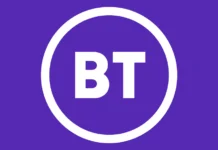It is well to be noted That by the end of this decade, 6G is all set to be commercially available. Apparently, 2028 has been earmarked as the year of prominent advancements, revolutionising connectivity with unmatched bandwidth, speed that is lightning fast, and ultra-low latency.
But there are a few significant hurdles one must overcome first and, in that light, the €104million initiative by the EU in order to speed up the 6G research while looks positive, but at the same time feels premature.
Notably, there happen to be structural issues that remain unresolved, and the fact is that without addressing them, funding alone is not likely to give any meaningful progress.
The base of 5G must flourish first
Let us be honest – before racing towards the next generation, 5G must first become strong, dependable, and accessible to each and everyone. At present, 5G coverage remains a bit patchy, with a demand that is unevenly met throughout urban as well as rural communities.
For instance, in France, the rural-urban gap when it comes to 5G download speeds happens to differ by region, with certain rural areas experiencing speeds that are almost 27% slower as compared to their urban counterparts.
Interestingly, the industry has moved too rapidly, and infrastructure has actually struggled to keep pace with it. Data coming from 5G Americas and Omdia happens to show that 5G has broadened four times quicker as compared to what 4G LTE did in the comparable period when LTE had gone past 500 million connections by the end of 2014.
It is well to be noted that this issue is most likely to worsen all the more as users connect to networks such as 5G due to the fact that the performance can degrade specifically during the peak times or within densely populated areas. It is indeed alarming to know that 6G technology is going to require a denser tower placement that is closer to users in order to reduce latency, thereby highlighting the need for significant investment within new spectrum, advanced hardware, and also energy-efficient systems. The fact of the matter is that one needs to invest in telecommunications now by giving 5G a very robust foundation before taking the giant leap of 6G technology. With 6G technology rolling out, data rates are almost 100 times faster as compared to 5G, and it also supports massive numbers when it comes to connected devices. There is no shred of doubt when we say that investment that is proactive is indeed the need of the hour.
The role of AI in telecoms
When we talk of the latest trends that are shaping the future of connectivity, the transforming role that AI plays in telecom, and the implications of 6G technology which is wireless in terms of consumers, tech companies, and investors, the telecommunications sector happens to face opportunities with certain underappreciated companies within upgrading infrastructure having massive growth potential in order to scale.
Notably, in April 2025, Rescale, due to its on-demand cloud simulation platform as well as having an investor roster that included the likes of Jeff Bezos, Peter Thiel, Richard Branson, and Sam Altman, happened to close a $115 million Series D round.
Interestingly, investment within companies such as these happens to offer a very compelling balance in terms of stability as well as growth, specifically in economic times that are uncertain. In a broader way, due to being an essential service, telecommunications have gone on to demonstrate consistent performance, even at the time of downturns, thereby outpacing many other sectors within Europe, all thanks to the foundational role it happens to play when it comes to digital infrastructure, along with dividend outputs, which are in every way dependable.
But like other classes, investing is not the same. While there are some of the regions, especially Africa, that can as well leapfrog legacy networks and move directly to mobile technologies that are much more advanced, the broader sector still happens to face a very steep hurdle when we talk of monetization challenges with 5G. And it wouldn’t come as a surprise when we say that the market is indeed responding to all this.
It is also worth noting that most of the investment which is done today happens to get directed towards service platforms and not towards the upgrades within the large-scale infrastructure setups. For example, Arrcus, due to its software, is transforming how major telecommunications companies as well as hyperscale data centers could as well manage traffic when it comes to global giants such as Bloomberg, SoftBank, Verizon, Apple, along with Amazon.
The opportunity within the rural segment
It should not come as a surprise when we say that the rural connectivity looks specifically very promising, yet it at the same time also happens to be an unexplored opportunity. Apparently, the investments within the rural broadband as well as tower infrastructure happen to be increasingly getting the support of both public as well as private funds, with projects, more often than not, delivering the double-digit internal rates of return and, in some cases, going well past 20% while at the same time bridging the digital divide and also helping with the economic growth within the communities that are underserved.
Through targeting rural expansion, investors don’t only tap the high-return projects, but at the same time, they also drive a meaningful societal effect, thereby supporting healthcare, education, and also entrepreneurship where it is needed the most.
The way forward is indeed clear – one must not run before taking a walk. By way of making appropriate investments, closing the digital divide and making high-quality internet very accessible as well as affordable to all has to be a priority. Only then can one actually build a future wherein the entire potential when it comes to 6G is realized on a foundation that is fully ready for it.




















